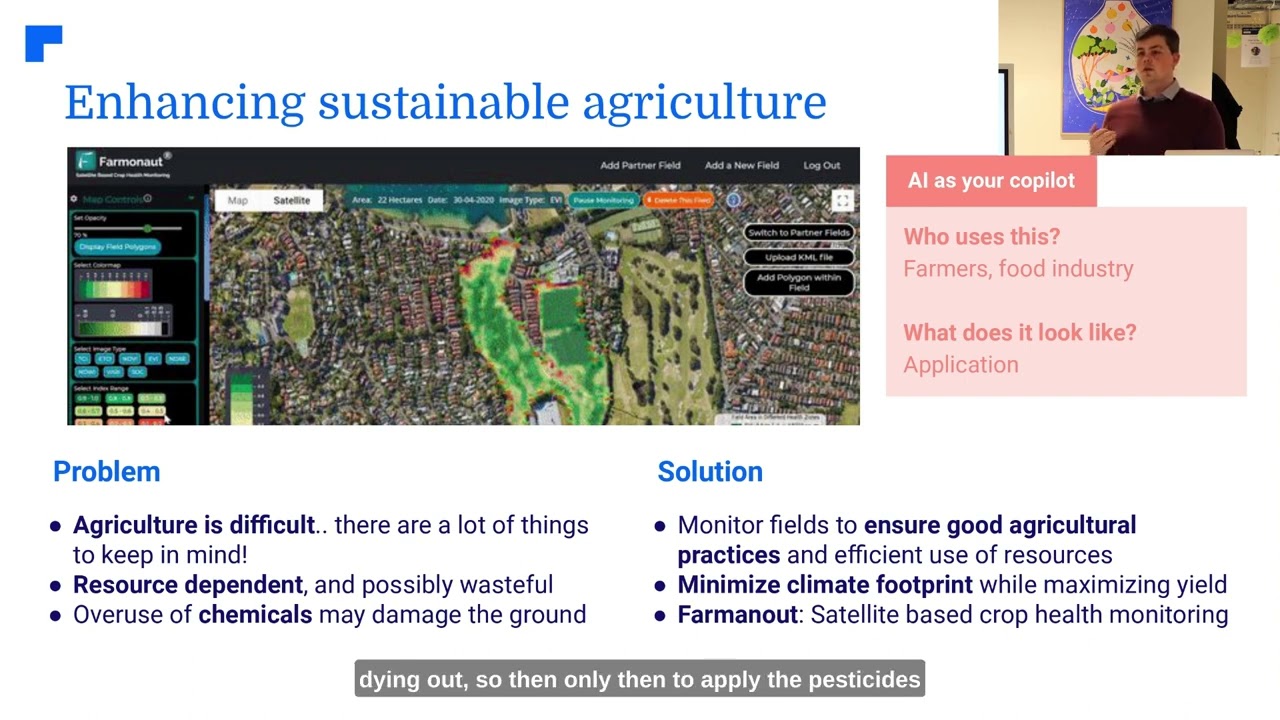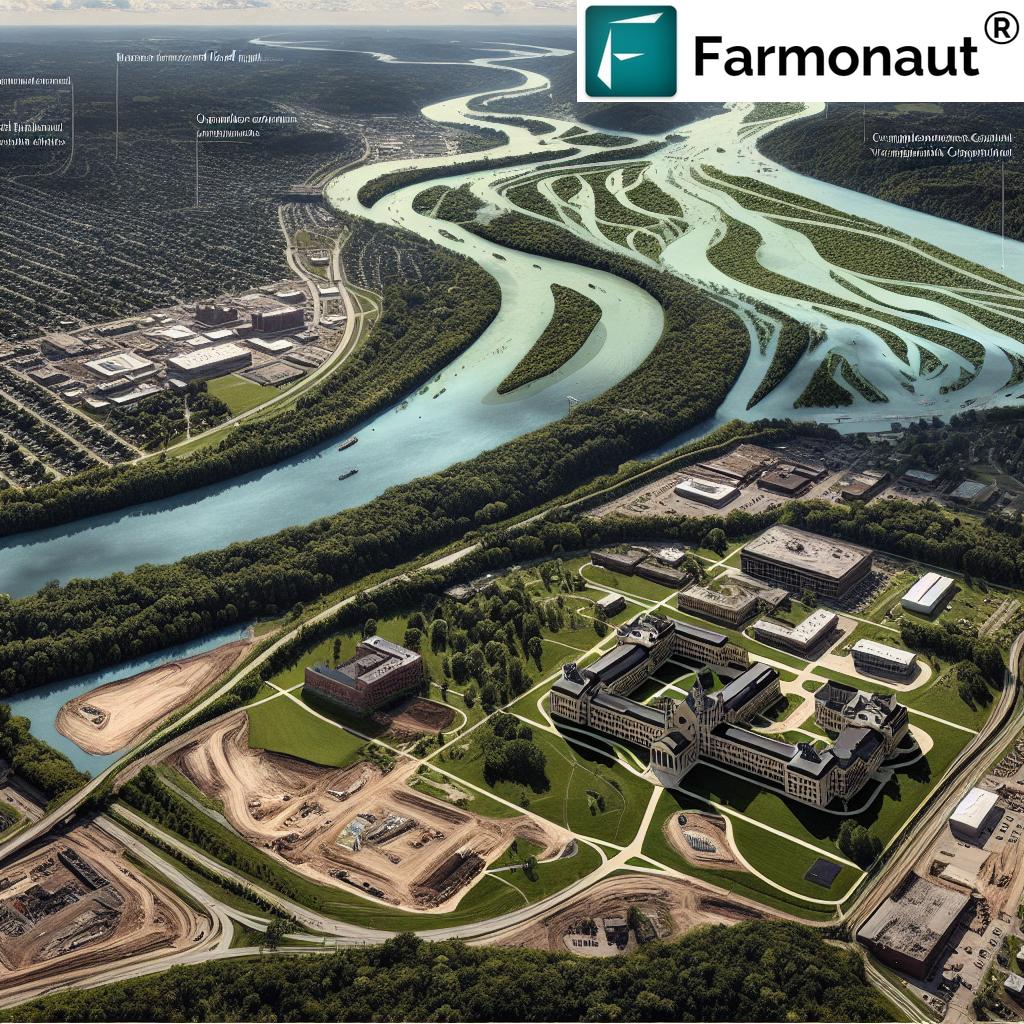EPA Faces Legal Challenge: Florida’s Radioactive Waste Road Project Raises Environmental Concerns
“Florida stores over 1 billion tons of phosphogypsum, a radioactive waste from fertilizer production, in stacks across the state.”
In a controversial move that has sparked intense debate and legal action, the U.S. Environmental Protection Agency (EPA) is facing a significant challenge after approving a plan to incorporate radioactive waste into a road project in Florida. This decision, made in late 2024, has ignited concerns about public health, environmental safety, and the precedent it may set for future infrastructure projects across the nation.
As we delve into this complex issue, we’ll explore the implications of using phosphogypsum in road construction, the legal battle unfolding, and the potential consequences for both the environment and public health. This case study exemplifies the ongoing struggle to balance industrial innovation with environmental protection and human safety.
The Controversial Approval: EPA’s Decision on Phosphogypsum Use
In December 2024, the EPA made a landmark decision by approving the use of phosphogypsum, a radioactive waste product from the fertilizer industry, in a road project near Tampa, Florida. This approval marked a significant departure from the agency’s long-standing policy, which had prohibited the use of phosphogypsum in road construction since 1992 due to “unacceptable level of risk to public health.”
The project in question is centered at the New Wales facility of Mosaic Fertilizer, a subsidiary of The Mosaic Company, located approximately 40 miles east of Tampa. While the EPA has emphasized that this authorization applies only to this specific project and includes conditions to ensure it remains within the scope of the application, environmental advocates fear it could open the door to wider implementation of this controversial practice.

The Legal Challenge: Center for Biological Diversity Takes Action
In response to the EPA’s decision, the Center for Biological Diversity has filed a legal challenge in the 11th U.S. Circuit Court of Appeals under the Clean Air Act. This environmental advocacy group argues that the use of phosphogypsum in road construction poses significant risks to public health and the environment.
Ragan Whitlock, Florida staff attorney at the Center for Biological Diversity, expressed grave concerns about the potential ramifications of this project: “Part of what makes this process so alarming, it’s not just a one-off science experiment. It’s being billed as the intermediate step between laboratory testing and full-scale implementation of the idea. So our concern is that whatever methodology is used for this project will be used for national approval down the road.”
Understanding Phosphogypsum: A Radioactive Byproduct
To fully grasp the implications of this decision, it’s crucial to understand what phosphogypsum is and why its use in road construction has been prohibited for decades.
- Composition: Phosphogypsum contains radium, which decays to form radon gas. Both radium and radon are radioactive elements known to cause cancer.
- Current Disposal Method: Normally, phosphogypsum is disposed of in engineered piles called stacks to limit public exposure to radon emissions.
- Scale of the Issue: More than 1 billion tons of this waste is currently stored in stacks across Florida, with the fertilizer industry adding approximately 40 million tons every year.
The sheer volume of phosphogypsum waste presents a significant challenge for the fertilizer industry and environmental regulators alike. The proposed road project aims to address this issue by repurposing the waste material, but at what cost to public health and environmental safety?
The Proposed Road Project: A Closer Look
Mosaic’s plan involves constructing a test road near its Florida stack with four sections, each utilizing different mixtures of phosphogypsum. The radioactive waste would be incorporated into the road base and then covered with asphalt. University of Florida researchers are slated to be involved in studying the project’s outcomes.
While the EPA has stated that the project “is at least as protective of public health as maintaining the phosphogypsum in a stack,” many environmental experts and concerned citizens remain skeptical.
Environmental and Health Concerns: The Crux of the Debate
The use of phosphogypsum in road construction raises several critical environmental and health concerns:
- Radon Emissions: The primary concern is the potential for increased radon emissions from roads built with phosphogypsum. Radon is a known carcinogen, and exposure to elevated levels over time can significantly increase the risk of lung cancer.
- Soil Contamination: There are fears that radioactive elements could leach from the road base into surrounding soil, potentially contaminating groundwater and affecting local ecosystems.
- Long-term Environmental Impact: The long-term effects of using radioactive waste in infrastructure are not fully understood, raising questions about the potential for unforeseen environmental consequences.
- Public Health Risks: Proximity to roads containing radioactive materials could expose nearby residents and road users to higher levels of radiation than they would otherwise encounter.
“The EPA’s approval of phosphogypsum in road construction near Tampa could impact 25 million tons of radioactive waste.”
The EPA’s Stance: Balancing Innovation and Safety
The EPA’s decision to approve this project reflects a complex balancing act between encouraging innovative solutions for waste management and ensuring public safety. In its Federal Register statement dated December 23, 2024, the agency noted:
“The review found that Mosaic’s risk assessment is technically acceptable, and that the potential radiological risks from the proposed project meet the regulatory requirements. The project is at least as protective of public health as maintaining the phosphogypsum in a stack.”
However, the EPA has declined to comment on the pending litigation, leaving many questions unanswered about how the agency plans to address the concerns raised by environmental groups and concerned citizens.

The Fertilizer Industry’s Perspective: Seeking Solutions for Waste Management
For the fertilizer industry, the approval of phosphogypsum use in road construction represents a potential solution to a long-standing waste management challenge. With over 1 billion tons of phosphogypsum stored in Florida alone and millions more added each year, finding alternative uses for this byproduct is a pressing concern for companies like Mosaic.
However, the industry’s track record on environmental safety has been called into question. In 2021, Mosaic faced scrutiny after a pond at its Piney Point site leaked, threatening to collapse and forcing the release of 215 million gallons of contaminated water into Tampa Bay. This incident serves as a stark reminder of the potential environmental risks associated with fertilizer production and waste management.
Comparative Analysis: Traditional vs. Phosphogypsum-based Roads
| Aspect | Traditional Road Materials | Phosphogypsum-based Roads | Environmental Concerns | Health Risks |
|---|---|---|---|---|
| Construction Costs | Higher | Potentially Lower | Low | Low |
| Road Lifespan | Well-established | Uncertain | Medium | Medium |
| Radon Emissions | Negligible | Potentially High | High | High |
| Soil Contamination | Low | Potentially High | High | Medium |
| Water Pollution Risks | Low | Potentially High | High | Medium |
| Long-term Health Effects | Well-understood | Uncertain | High | High |
This table illustrates the complex trade-offs involved in considering phosphogypsum for road construction. While there may be potential cost savings and waste management benefits, the environmental and health risks pose significant challenges that cannot be overlooked.
The Broader Implications: Setting a Precedent for Radioactive Waste Management
The EPA’s decision and the ensuing legal challenge have implications that extend far beyond this single road project in Florida. If the use of phosphogypsum in road construction is ultimately approved on a wider scale, it could set a precedent for how radioactive waste is managed and utilized across the United States.
Some potential implications include:
- Increased pressure to find alternative uses for other types of industrial waste
- Changes in environmental regulations governing the disposal and use of radioactive materials
- A shift in public perception regarding the acceptability of using potentially hazardous materials in infrastructure projects
- New challenges for environmental monitoring and public health surveillance in areas where such materials are used
The Role of Technology in Environmental Monitoring
As we grapple with the challenges posed by the potential use of phosphogypsum in road construction, it’s worth considering how advanced technologies could play a role in monitoring and mitigating environmental risks. Companies like Farmonaut, which specializes in satellite-based farm management solutions, demonstrate the potential for remote sensing and data analytics in environmental monitoring.
While Farmonaut’s primary focus is on agricultural applications, the principles of satellite-based monitoring and AI-driven analysis could potentially be adapted to track environmental changes around infrastructure projects that use radioactive materials. This could include monitoring soil health, vegetation changes, and even atmospheric conditions that might indicate increased radon emissions.
For more information on Farmonaut’s innovative agricultural solutions, you can explore their  or check out their mobile apps:
or check out their mobile apps:
Public Response and Community Engagement
The EPA’s decision to approve the use of phosphogypsum in road construction has sparked significant public concern and debate. Many local residents and environmental activists have voiced their opposition to the project, citing fears about long-term health effects and environmental degradation.
Key points of public concern include:
- Potential exposure to radon gas and other radioactive materials
- Worries about property values in areas near phosphogypsum-based roads
- Concerns about the precedent this project might set for future waste management practices
- Questions about the adequacy of long-term monitoring and safety measures
Community engagement and transparent communication will be crucial as this project moves forward. Public forums, educational initiatives, and open dialogue between regulatory agencies, industry representatives, and local communities will be essential in addressing concerns and ensuring that all voices are heard in this important debate.
The Clean Air Act Challenge: Legal Implications
The legal challenge filed by the Center for Biological Diversity under the Clean Air Act brings several important legal questions to the forefront:
- Regulatory Authority: Does the EPA have the authority to approve the use of phosphogypsum in road construction, given its previous prohibition under the Clean Air Act?
- Risk Assessment: Is the EPA’s assessment of the potential risks associated with this project adequate and in line with legal requirements?
- Precedent Setting: How might this case influence future interpretations of environmental regulations and waste management practices?
- Public Health Protections: Does the approval of this project conflict with the EPA’s mandate to protect public health and the environment?
The outcome of this legal challenge could have far-reaching implications for environmental policy and the management of radioactive waste across the United States.
International Perspectives on Radioactive Waste Management
As we consider the implications of using phosphogypsum in road construction, it’s worth examining how other countries approach the management of radioactive waste from industrial processes. Some international approaches include:
- Stringent Containment: Many European countries opt for strict containment and monitoring of radioactive waste, prioritizing long-term storage solutions over reuse.
- Research into Alternative Uses: Some nations are investing in research to find safe ways to repurpose radioactive waste, focusing on applications that minimize public exposure.
- Regulatory Frameworks: Countries like Canada and Australia have developed comprehensive regulatory frameworks for managing naturally occurring radioactive materials (NORM) in industries like fertilizer production.
These international perspectives could provide valuable insights as the U.S. grapples with its own approach to managing phosphogypsum and other radioactive waste materials.
The Role of Scientific Research and Innovation
As the debate over phosphogypsum use in road construction continues, the importance of ongoing scientific research cannot be overstated. Rigorous, independent studies are needed to fully understand the long-term implications of this practice. Areas of focus for future research might include:
- Long-term stability and durability of phosphogypsum-based road materials
- Advanced techniques for containing and neutralizing radioactive elements in construction materials
- Comprehensive environmental impact assessments over extended periods
- Innovative monitoring technologies for detecting radiation and environmental changes
Companies like Farmonaut, with their expertise in satellite-based monitoring and data analysis, could potentially contribute to these research efforts by providing advanced tools for environmental tracking and assessment. For more information on Farmonaut’s capabilities, you can explore their API or read their API Developer Docs.
Economic Considerations and Industry Impact
The potential use of phosphogypsum in road construction also raises important economic questions:
- Cost Savings: Could the use of phosphogypsum significantly reduce road construction costs, and if so, at what environmental price?
- Industry Benefits: How might this practice impact the fertilizer industry’s profitability and sustainability?
- Job Creation: Could new industries emerge around the processing and application of phosphogypsum for construction purposes?
- Liability Concerns: How will long-term liability for potential health and environmental impacts be addressed?
These economic factors must be carefully weighed against the potential environmental and health risks associated with using radioactive waste in infrastructure projects.
Conclusion: A Critical Juncture for Environmental Policy
The EPA’s approval of phosphogypsum use in road construction and the subsequent legal challenge represent a critical juncture in U.S. environmental policy. This case highlights the complex challenges we face in balancing industrial innovation, waste management, and environmental protection.
As this legal battle unfolds, it will be crucial for all stakeholders – including regulatory agencies, industry representatives, environmental groups, and the public – to engage in open, science-based dialogue. The decisions made in this case could set important precedents for how we manage radioactive waste and approach environmental safety in infrastructure projects for years to come.
Ultimately, the resolution of this controversy will require a careful balancing of economic interests, scientific evidence, and the fundamental imperative to protect public health and the environment. As we move forward, it is essential that we prioritize long-term sustainability and safety over short-term economic gains, ensuring that our infrastructure choices do not come at the cost of our health and the health of future generations.
FAQ Section
- What is phosphogypsum?
Phosphogypsum is a radioactive waste byproduct from fertilizer production, containing radium which decays to form radon gas. - Why has phosphogypsum been prohibited in road construction?
It has been prohibited since 1992 due to unacceptable levels of risk to public health, primarily related to radiation exposure. - What are the main environmental concerns with using phosphogypsum in roads?
The main concerns include radon emissions, soil contamination, and potential water pollution from radioactive elements leaching into the environment. - How much phosphogypsum is stored in Florida?
Over 1 billion tons of phosphogypsum is currently stored in stacks across Florida. - What is the Clean Air Act challenge about?
The Center for Biological Diversity has filed a legal challenge under the Clean Air Act, arguing that the EPA’s approval of phosphogypsum use in roads violates environmental protection standards. - How might this decision impact future waste management practices?
If approved, it could set a precedent for using other types of industrial waste in infrastructure projects, potentially changing how we approach waste management and environmental regulations. - What role can technology play in monitoring environmental impacts?
Advanced technologies like satellite monitoring and AI-driven analysis could help track environmental changes and potential health risks associated with using phosphogypsum in roads. - How does this issue relate to sustainable agriculture?
While not directly related to agriculture, this issue highlights the broader challenges of managing industrial byproducts in a sustainable manner, which is relevant to the agricultural sector’s environmental impact.
Earn With Farmonaut: Join Our Affiliate Program
Earn 20% recurring commission with Farmonaut’s affiliate program by sharing your promo code and helping farmers save 10%. Onboard 10 Elite farmers monthly to earn a minimum of $148,000 annually—start now and grow your income!
Farmonaut Subscriptions



















